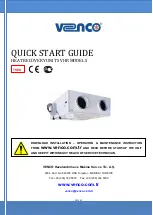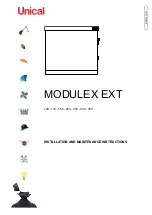
E-5
TROUBLESHOOTING
E-5
IDEALARC® DC-1000
Observe all Safety Guidelines detailed throughout this manual
If for any reason you do not understand the test procedures or are unable to perform the tests/repairs safely, contact your
Local Lincoln Authorized Field Service Facility
for technical troubleshooting assistance before you proceed.
CAUTION
P.C. BOARD TROUBLESHOOTING GUIDE
ELECTRIC SHOCK
can kill.
• Have an electrician install and service
this equipment.
• Turn the input power off at the fuse
box before working on equipment.
• Do not touch electrically hot parts.
---------------------------------------------------------------------
WARNING
Machine settings for P.C. board troubleshooting.
Disconnect all leads to the wire feeder and jumper
terminals #2 and #4 on DC-1000. Panel/Remote
Switch in Panel position. Mode switch in the CV
Innershield position.
CONTROL CIRCUIT P.C. BOARD
1. LED1 indicates AC input voltage is present at pins
282-283. If not lit, check the voltage across the
secondary winding of the isolation transformer, T3.
The voltage should be approximately 42 volts. If
not, the problem is in the power supply and not the
P.C. board.
2. LED2 indicates welder output voltage is being
supplied to the control circuit. If not lit, check to
make certain lead 222 from pin 2 of the 14-pin
control circuit P.C. board connector is connected
to the power source negative output lead and is
not broken.
3. LED3 indicates power is being applied to fault
protection pilot relay 2CR to turn on the input
contactor.
4. LED4 indicates when overcurrent protection circuit
is being activated.
5. LED5 indicates a control signal is being supplied
to the firing circuit. As the output control is varied,
LED5 should change brilliancy from bright at low
output to dim at high output.
FIRING CIRCUIT P.C. BOARD
All nine light emitting diodes must be lit when the
power source is turned on and the wire feed arc start
button is pressed or a jumper is connected between 2
and 4.
1. Lights 7, 8, and 9 indicate AC power being
supplied to the P.C. boards from T1 auxiliary
winding. If a light is not lit, turn the machine off and
unplug P5 from J5 on the firing P.C. board. Turn
the machine on and check the following voltages:
• If approximately 75 VAC is present, turn the
machine off, plug P5 back into firing board. Turn
the machine back on and check to see if the light
or lights are on. If the light or lights are not on
replace the firing P.C. board.
• If the 75 VAC was not present, then check the
wiring.
2. Lights 1 through 6 indicate gate signals are being
supplied to the main power SCR’s 1 through 6
respectively. If light 5 on the control circuit and
lights 7 through 9 on the firing circuit are lit and
lights 1 through 6 are not lit, check lead 231
between the firing circuit and the control circuit
that it is not broken and is connected to each
Molex connector. If the lead shows continuity and
lights 1 through 6 are not lit, replace the firing
circuit P.C. board. If any one of the lights 1
through 6 is not lit and lights 7 through 9 are lit,
replace the firing circuit P.C. board.
Light That Check AC Voltage Voltage Should
Was Off Between Pins of Be Approx.
Plug P5
7 P5 Pins 2 & 4 75 VAC
(Wires 203, 204)
8 P5 Pins 7 & 3 75 VAC
(Wires 205, 206)
9 P5 Pins 9 & 8 75 VAC
(Wires 207, 208)
















































